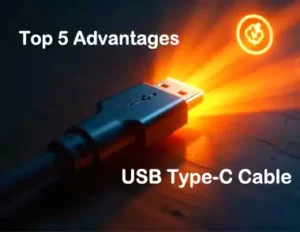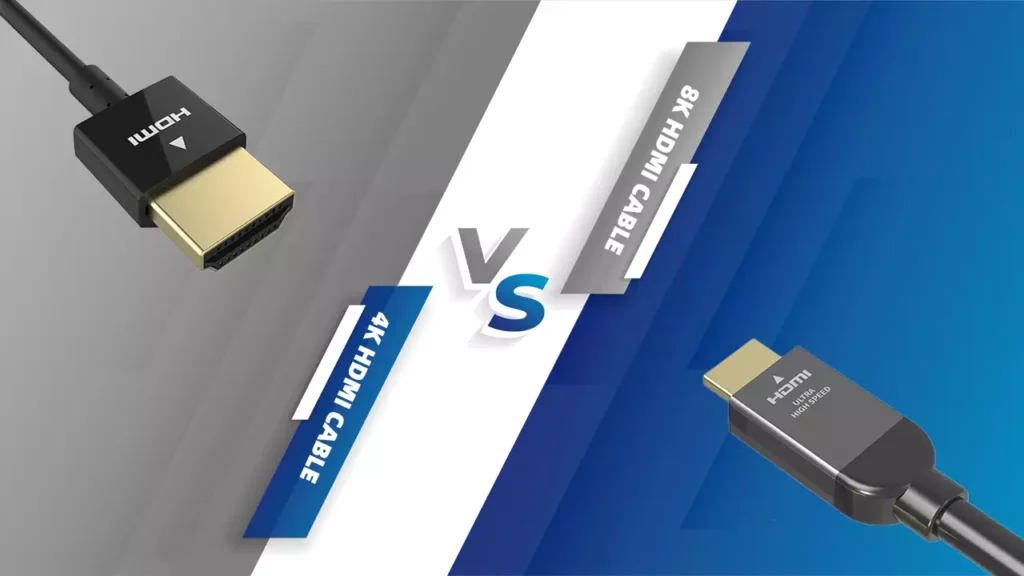
Table of Contents
Choosing between a 4K vs 8K HDMI cable can significantly impact your business’s audiovisual performance. The right HDMI cable ensures seamless connectivity and optimal display quality, which is crucial for professional presentations and high-end media applications. An 8K HDMI cable supports resolutions up to 4320p, offering sharper images and vibrant colors, making it ideal for businesses that demand cutting-edge AV performance. Meanwhile, a 4K HDMI cable remains a cost-effective choice for many standard business needs. As an HDMI cable manufacturer, understanding these differences between 4K and 8K cables helps you make informed decisions that align with your business goals.
Key Takeaways
- Choose 4K HDMI cables for standard business applications like presentations and video conferencing, as they offer excellent value and performance.
- Invest in 8K HDMI cables if your business requires cutting-edge AV performance, as they support higher resolutions and advanced features like Dynamic HDR and eARC.
- Consider the bandwidth requirements: 4K cables support up to 18 Gbps, while 8K cables handle up to 48 Gbps, ensuring optimal performance for your devices.
- Future-proof your digital infrastructure by selecting HDMI cables that are backward compatible and support upcoming technologies.
- Evaluate your specific needs and budget to make an informed decision, balancing cost against the benefits of enhanced image quality and durability.
- Prioritize high-quality cables from reputable brands to ensure reliability and longevity, avoiding the pitfalls of cheap, low-quality options.
- Regularly test and maintain your HDMI cables to ensure consistent performance and replace any that show signs of wear.
Understanding HDMI Cables: A Quick Overview
What are HDMI Cables?
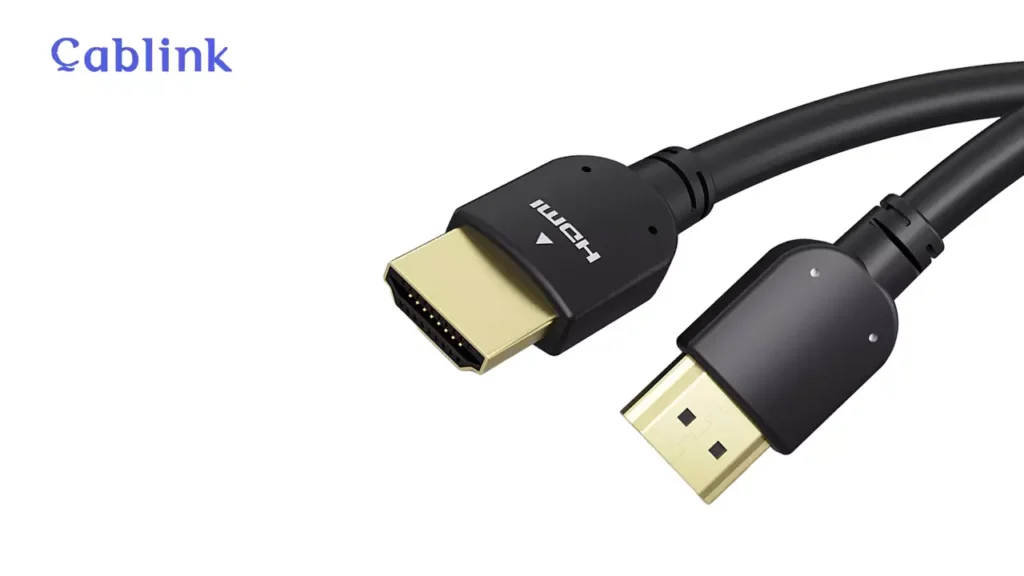
HDMI cables, or High-Definition Multimedia Interface cables, serve as the backbone for transmitting high-quality audio and video signals between devices. These cables have become the standard for connecting televisions, monitors, gaming consoles, and other multimedia devices. They support a wide range of resolutions and audio formats, ensuring that you experience the best possible picture and sound quality.
There are three main types of HDMI cables: Standard, High Speed, and Premium High Speed. Standard HDMI cables handle resolutions up to 1080p, making them suitable for basic HD content. High Speed HDMI cables can manage 4K resolutions, providing enhanced image clarity and detail. Premium High Speed HDMI cables, on the other hand, support 8K resolution or higher, offering the ultimate in visual fidelity and future-proofing your setup.
Why Does Cable Quality Matter for 4K and 8K?
The quality of your HDMI cable plays a crucial role in determining the performance of your audiovisual equipment. For 4K and 8K resolutions, cable quality becomes even more significant due to the increased data transmission requirements. High-quality cables ensure that the signal remains strong and stable, preventing issues like image distortion, flickering, or loss of signal.
4K vs 8K HDMI cables differ primarily in their bandwidth capabilities. While 4K HDMI cables typically support a bandwidth of up to 18 Gbps, 8K HDMI cables boast a much higher bandwidth of up to 48 Gbps. This increased bandwidth allows 8K cables to handle more data, supporting advanced features such as Dynamic HDR, eARC, and VRR. These features enhance the viewing experience by providing richer colors, deeper contrasts, and smoother motion.
Moreover, 8K HDMI cables often feature more robust shielding and durable construction to withstand environmental challenges and maintain high transmission quality. This makes them ideal for businesses that require reliable and high-performance connections for professional presentations and media applications.
4K vs 8K: Understanding Resolutions

What is 4K Resolution?
Overview of 4K Resolution
4K resolution, also known as Ultra High Definition (UHD), offers a display resolution of 3840 x 2160 pixels. This resolution provides four times the pixel count of Full HD, resulting in sharper and more detailed images. You will notice the enhanced clarity and vibrant colors, making 4K ideal for various applications.
Key Features of 4K HDMI Cables
4K HDMI cables support a bandwidth of up to 18 Gbps, which is sufficient for transmitting 4K video at 60Hz. These cables ensure that you experience smooth video playback and rich color depth. They also support features like HDR (High Dynamic Range), which enhances contrast and color accuracy, providing a more lifelike viewing experience.
Use Cases for 4K HDMI Cables in B2B
In business settings, 4K HDMI cables are perfect for digital signage, corporate presentations, and video conferencing. They deliver clear and professional visuals, essential for engaging audiences and conveying information effectively. Additionally, 4K cables are cost-effective, making them a practical choice for businesses with standard audiovisual needs.
What is 8K Resolution?
Overview of 8K Resolution
8K resolution takes visual fidelity to the next level with a display resolution of 7680 x 4320 pixels. This resolution offers sixteen times the pixel count of Full HD, resulting in incredibly detailed and immersive images. You will find 8K particularly beneficial for applications requiring the highest level of detail and realism.
Key Features of 8K HDMI Cables
8K HDMI cables boast a bandwidth of up to 48 Gbps, allowing them to handle 8K video at 60Hz. These cables support advanced features such as Dynamic HDR, eARC (Enhanced Audio Return Channel), and VRR (Variable Refresh Rate). These features enhance the viewing experience by providing richer colors, deeper contrasts, and smoother motion.
Use Cases for 8K HDMI Cables in B2B
For businesses, 8K HDMI cables are ideal for high-end presentations, large-scale video walls, and virtual reality applications. They provide the ultimate visual experience, ensuring that your content stands out and captivates your audience. Investing in 8K cables also future-proofs your digital infrastructure, preparing your business for upcoming technological advancements.
Key Differences Between 4K and 8K HDMI Cable
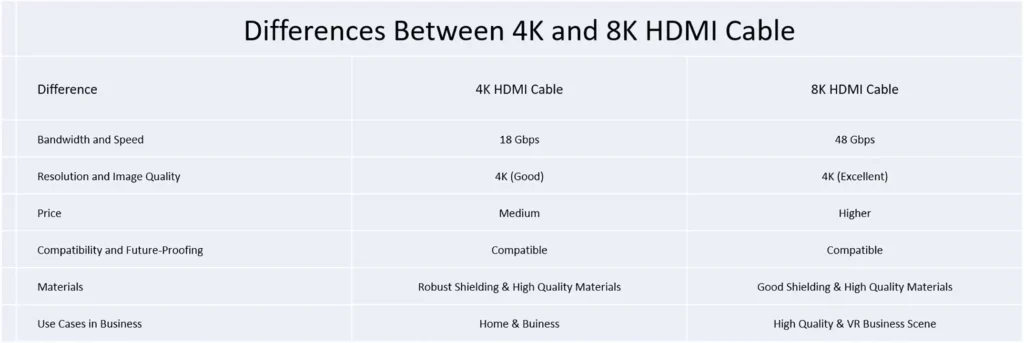
Bandwidth and Speed
The primary difference between 4K and 8K HDMI cables lies in their bandwidth capabilities. While 4K cables support up to 18 Gbps, 8K cables offer a much higher bandwidth of 48 Gbps. This increased bandwidth allows 8K cables to transmit more data, supporting higher resolutions and refresh rates.
Resolution and Image Quality
8K resolution provides a significant leap in image quality compared to 4K. You will notice finer details and more vibrant colors with 8K, making it ideal for applications where image quality is paramount. However, 4K still offers excellent visuals for most business needs.
Price Differences
8K HDMI cables tend to be more expensive due to their advanced capabilities and higher performance specifications. If your business requires cutting-edge AV performance, the investment in 8K cables may be justified. However, 4K cables remain a more budget-friendly option for standard applications.
Compatibility and Future-Proofing
8K HDMI cables are backward compatible with older HDMI versions, allowing you to connect various devices seamlessly. This compatibility ensures that your business can adapt to future technological advancements without needing frequent upgrades.
Materials Difference
8K HDMI cables often feature more robust shielding and durable construction. This design ensures high transmission quality and reliability, even in challenging environments. You will find these cables ideal for businesses that demand consistent and high-performance connections.
Use Cases in Business
In business, the choice between 4K and 8K HDMI cables depends on your specific needs. 4K cables are suitable for everyday applications like presentations and video conferencing. In contrast, 8K cables excel in scenarios requiring the highest image quality, such as virtual reality and large-scale displays.
HDMI 2.0 vs HDMI 2.1: Capabilities and Limitations
Overview of HDMI 2.0
HDMI 2.0 emerged as a significant upgrade in the realm of audiovisual connectivity. It supports 4K resolution at 60Hz, making it suitable for most business applications, including presentations and digital signage. With a bandwidth of 18 Gbps, HDMI 2.0 can handle high-definition video and audio, ensuring that your business presentations are clear and impactful. This version also supports Dolby audio and HDCP 2.0, enhancing the overall media experience.
Supported Resolutions and Features
HDMI 2.0 allows you to enjoy 4K content with vibrant colors and detailed images. It supports a wide color gamut and 3D functionality, which can be beneficial for businesses involved in media creation or broadcasting. The ability to transmit high-quality audio alongside video makes it a versatile choice for corporate environments.
Limitations for Business Use
While HDMI 2.0 is robust, it has limitations. It cannot support resolutions beyond 4K or refresh rates higher than 60Hz. For businesses aiming to adopt cutting-edge technology, this might pose a constraint. As technology advances, the need for higher resolutions and faster refresh rates becomes more pronounced, making HDMI 2.0 less future-proof.
Overview of HDMI 2.1
HDMI 2.1 represents a leap forward in HDMI technology. It offers enhanced features that cater to the demands of modern AV applications. With support for 8K resolution at 60Hz and 4K at 120Hz, HDMI 2.1 provides an immersive viewing experience. The increased bandwidth capability of up to 48 Gbps allows for smoother motion and richer colors, making it ideal for businesses that require high-end AV performance.
Enhanced Features and Benefits
HDMI 2.1 introduces several advanced features. Dynamic HDR ensures that every moment of a video is displayed at its ideal values for depth, detail, brightness, contrast, and wider color gamuts. The Enhanced Audio Return Channel (eARC) simplifies connectivity and provides greater ease of use for multiple components. Variable Refresh Rate (VRR) reduces lag, stutter, and frame tearing, which is particularly beneficial for gaming and interactive displays.
Suitability for 8K Content
For businesses looking to future-proof their digital infrastructure, HDMI 2.1 is the optimal choice. Its ability to support 8K content ensures that your business stays ahead of technological advancements. Whether you’re setting up large-scale video walls or engaging in virtual reality applications, HDMI 2.1 provides the necessary capabilities to deliver exceptional visual experiences.
4K vs 8K HDMI Cables Technique Data Sheet
Technical Specifications Comparison
When comparing 4K vs 8K HDMI cables, the technical specifications reveal significant differences that impact performance and application. 4K HDMI cables typically support HDMI 2.0, offering a bandwidth of up to 18 Gbps. This bandwidth suffices for transmitting 4K video at 60Hz, ensuring smooth playback and vibrant visuals. On the other hand, 8K HDMI cables are designed for HDMI 2.1, which supports a much higher bandwidth of up to 48 Gbps. This increased bandwidth allows for the transmission of 8K video at 60Hz and 4K at 120Hz, accommodating advanced features like Dynamic HDR, eARC (Enhanced Audio Return Channel), and VRR (Variable Refresh Rate).
These advanced features enhance the viewing experience by providing richer colors, deeper contrasts, and smoother motion. For businesses, this means that 8K HDMI cables can deliver superior audiovisual quality, making them ideal for high-end presentations and immersive applications. However, if your business primarily deals with standard audiovisual needs, 4K HDMI cables remain a cost-effective and reliable choice.
Material Differences and Their Impact
Cable Construction
The construction of HDMI cables significantly influences their performance and durability. 4K HDMI cables generally feature standard shielding and construction materials suitable for everyday use. They provide reliable performance for most business applications, such as presentations and video conferencing.
In contrast, 8K HDMI cables often incorporate more robust shielding and higher-quality materials. This construction ensures that the cables can handle the increased data transmission demands of 8K content. The enhanced shielding also protects against electromagnetic interference, maintaining signal integrity even in challenging environments. For businesses that require consistent and high-performance connections, investing in 8K HDMI cables can be beneficial.
Durability and Performance
Durability is a crucial factor when selecting HDMI cables for business use. 4K HDMI cables offer adequate durability for standard applications, but they may not withstand the rigors of more demanding environments. 8K HDMI cables, with their superior construction, provide enhanced durability and performance. They are designed to endure frequent use and environmental challenges, ensuring long-lasting reliability.
For businesses that rely on high-quality audiovisual presentations, the durability and performance of 8K HDMI cables can justify their higher cost. These cables not only deliver exceptional image quality but also ensure that your digital infrastructure remains robust and future-proof.
4K Vs 8K HDMI Cable Technique Data Sheet
Feature | 4K HDMI Cable | 8K HDMI Cable |
Resolution Support | Up to 3840 x 2160 (4K) | Up to 7680 x 4320 (8K) |
Bandwidth Requirements | 18 Gbps (HDMI 2.0) | 48 Gbps (HDMI 2.1) |
Supported Frame Rate | 60 Hz (4K) | 120 Hz (8K) |
HDR Support | Yes (HDR10, Dolby Vision) | Yes (HDR10+, Dolby Vision) |
Cable Length Considerations | Up to 15-20 meters without signal loss | Up to 5-10 meters without signal loss |
Audio Return Channel (ARC) | Supported (HDMI 2.0) | Supported (HDMI 2.1) |
Color Depth | 10-bit, 12-bit HDR | 10-bit, 12-bit HDR, up to 16-bit |
Price Range | Affordable | Premium pricing |
Use Case Recommendation | Corporate, Media Creation, Gaming | High-end Displays, Simulation, Video Walls |
5 Factors to Consider When Choosing the Right HDMI Cable
Selecting the appropriate HDMI cable is essential for ensuring a robust connection between your devices. A well-chosen cable can prevent disruptions and maintain a seamless audiovisual experience. Here are some key factors to consider:
Device Compatibility
You must ensure that the HDMI cable you choose is compatible with your devices. Different devices may require specific HDMI versions to function optimally. For instance, if you have a device that supports HDMI 2.1, using a cable that only supports HDMI 2.0 might limit its capabilities. Always check the specifications of your devices and match them with the appropriate HDMI cable version to avoid any compatibility issues.
Resolution Needs
Resolution plays a crucial role in determining the quality of your visual output. If your business relies on high-definition displays, you need an HDMI cable that supports the desired resolution. For 4K displays, a high-speed HDMI cable is necessary to handle the increased data transmission. On the other hand, if you are working with 8K displays, you will require an HDMI cable that supports higher bandwidth to ensure excellent image quality. Consider how HDMI cables affect your video resolution and choose the best cords to guarantee an outstanding connection and visuals.
Bandwidth Requirements
Bandwidth is a critical factor when selecting an HDMI cable. It determines the amount of data the cable can transmit per second. Higher resolutions and advanced features like HDR and VRR demand more bandwidth. For example, 4K HDMI cables typically support up to 18 Gbps, while 8K HDMI cables can handle up to 48 Gbps. Ensure that the cable you choose meets the bandwidth requirements of your devices to avoid any performance bottlenecks.
Recommendation: Opt for high-quality, high-speed HDMI cables with gold connectors. These cables offer enhanced durability and ensure a top-quality picture over time, especially in complex systems where cables are inconvenient to replace or refurbish.
By considering these factors, you can select the right HDMI cable that aligns with your business needs, ensuring optimal performance and future-proofing your audiovisual setup.
Cable Length
Cable length plays a pivotal role in maintaining signal integrity and ensuring optimal performance. When selecting an HDMI cable, you must consider the distance between your devices. Longer cables can lead to signal degradation, which affects the quality of audio and video output. For most business applications, a cable length of up to 15 feet is sufficient to maintain a strong connection without compromising quality.
However, if your setup requires longer cables, consider using active HDMI cables. These cables include built-in signal boosters that help maintain signal strength over extended distances. Active cables are ideal for large conference rooms or auditoriums where devices are far apart. By choosing the appropriate cable length, you ensure seamless connectivity and prevent disruptions during important presentations or meetings.
HDR and Frame Rate Support
High Dynamic Range (HDR) and frame rate support are crucial features that enhance the visual experience. HDR provides a wider range of colors and contrast, resulting in more lifelike images. When selecting an HDMI cable, ensure it supports HDR to take full advantage of this feature. This is particularly important for businesses involved in media creation or broadcasting, where image quality is paramount.
Frame rate support is equally important, especially for applications involving fast-moving visuals, such as gaming or video production. Higher frame rates result in smoother motion and reduce motion blur. HDMI cables with higher bandwidth capabilities, like those supporting HDMI 2.1, can handle higher frame rates, ensuring a fluid visual experience.
Recommendation: Opt for high-speed HDMI cables with gold connectors to ensure top-quality picture and durability. These cables are especially beneficial in complex systems where replacements are inconvenient. By considering HDR and frame rate support, you enhance your audiovisual setup, delivering exceptional performance and future-proofing your business technology.
4K and 8K HDMI Cable Applications in Business
4K HDMI Cable Applications
Digital Signage and Advertising
In the realm of digital signage and advertising, 4K HDMI cables offer a cost-effective solution for delivering high-quality visuals. You can use these cables to connect displays that showcase vibrant and detailed advertisements, capturing the attention of potential customers. The clarity provided by 4K resolution ensures that your marketing messages are both impactful and memorable.
Corporate Presentations and Video Conferencing
For corporate presentations and video conferencing, 4K HDMI cables provide reliable connectivity and excellent image quality. You can enhance your presentations with sharp visuals, making complex data and graphics easier to understand. In video conferencing, 4K cables ensure that participants experience clear and professional communication, fostering better collaboration and decision-making.
Media Creation and Editing
In media creation and editing, 4K HDMI cables play a crucial role in maintaining the integrity of high-resolution content. You can connect editing suites and monitors to ensure that every detail is visible, allowing for precise adjustments and enhancements. This capability is essential for professionals who demand accuracy and quality in their work.
Home Office and Remote Work Solutions
As remote work becomes more prevalent, 4K HDMI cables offer a practical solution for home office setups. You can connect multiple devices, such as laptops and monitors, to create an efficient and productive workspace. The high resolution supports multitasking and ensures that you can view detailed documents and presentations with ease.
8K HDMI Cable Applications
High-End Business Presentations and Simulations
In high-end business presentations and simulations, 8K HDMI cables deliver unparalleled image quality. You can present complex simulations with stunning detail, making them more immersive and engaging. This capability is particularly beneficial for industries such as architecture, engineering, and medical imaging, where precision and clarity are paramount.
Large-Scale Video Walls
For large-scale video walls, 8K HDMI cables provide the necessary bandwidth to support expansive displays. You can create visually striking installations that captivate audiences and convey information effectively. The high resolution ensures that even the largest screens maintain sharpness and detail, enhancing the overall viewing experience.
Virtual Reality and 3D Rendering
In virtual reality and 3D rendering applications, 8K HDMI cables offer the bandwidth required for seamless performance. You can connect VR headsets and rendering stations to deliver immersive experiences with lifelike visuals. This capability is essential for industries such as gaming, design, and training, where realism and interactivity are critical.
Future-Proofing Digital Infrastructure
Investing in 8K HDMI cables allows you to future-proof your digital infrastructure. As technology advances, you can ensure that your business remains at the forefront of audiovisual innovation. The backward compatibility of 8K cables means you can integrate them with existing systems while preparing for future upgrades, providing a strategic advantage in a rapidly evolving market.
Recommendations for the Best HDMI Cables
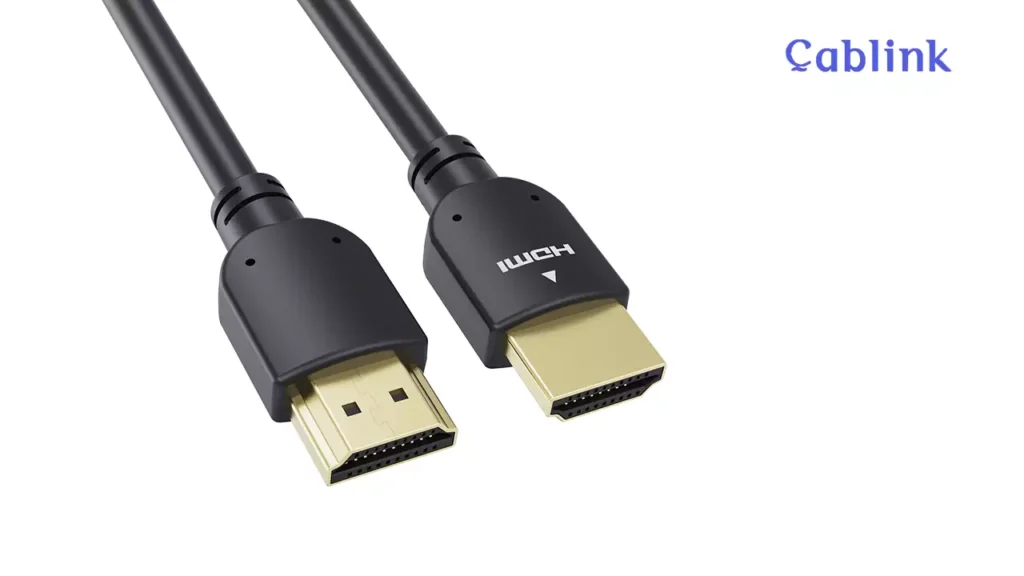
Choosing the right HDMI cable can significantly enhance your business’s audiovisual experience. Whether you need a 4K or 8K HDMI cable, understanding their features and benefits will help you make an informed decision.
Best 4K HDMI Cables
Features and Benefits
When selecting a 4K HDMI cable, prioritize those that support HDMI 2.0 or above. These cables ensure high-speed data transmission, allowing you to enjoy vibrant colors and detailed images. They are ideal for corporate meeting rooms and broadcasting feeds, where image clarity is crucial. High-speed HDMI cables also support HDR, enhancing contrast and color accuracy for a more lifelike viewing experience.
4K HDMI cables are generally more affordable, offering excellent value for most users. They provide reliable performance for standard business applications, such as presentations and video conferencing. Their cost-effectiveness makes them a practical choice for businesses with budget constraints.
Recommended Brands (e.g., Cablink)
Several brands offer high-quality 4K HDMI cables. Cablink is renowned for its durable and reliable cables, ensuring seamless connectivity and optimal performance. Another notable brand is CableWholesale, which provides high-speed HDMI cables that support 4K resolution, making them effective in various business settings.
Best 8K HDMI Cables
Features and Benefits
For businesses seeking cutting-edge AV performance, 8K HDMI cables are the optimal choice. These cables support HDMI 2.1, offering a bandwidth of up to 48 Gbps. This capability allows for the transmission of 8K video at 60Hz and 4K at 120Hz, accommodating advanced features like Dynamic HDR, eARC, and VRR. These features enhance the viewing experience by providing richer colors, deeper contrasts, and smoother motion.
8K HDMI cables often feature robust shielding and durable construction, ensuring high transmission quality and reliability. They are ideal for high-end presentations, large-scale video walls, and virtual reality applications. Investing in 8K cables also future-proofs your digital infrastructure, preparing your business for upcoming technological advancements.
Recommended Brands (e.g., Cablink)
Cablink offers top-tier 8K HDMI cables known for their superior performance and durability. Another excellent option is the BG-CAB-H21A from BZBGEAR, which caters to a wide range of business needs. Whether you’re maintaining digital signage at an airport or showcasing products in a retail setting, these active optical HDMI cables ensure uninterrupted and visually impressive displays.
How to Choose the Right HDMI Cable for Your Business
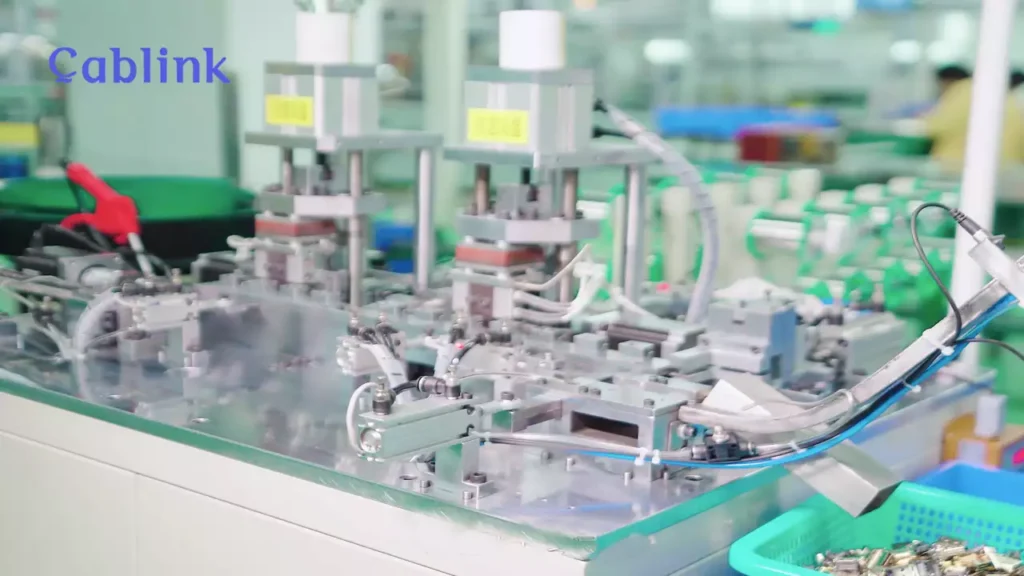
Selecting the right HDMI cable for your business involves understanding your specific needs and future-proofing your investment. Here’s a guide to help you make an informed decision.
Assessing Business Needs
Start by evaluating the audiovisual requirements of your business. Consider the types of devices you use and the quality of output you need. For instance, if your business relies heavily on high-definition displays for presentations or digital signage, a Premium High Speed HDMI Cable might be sufficient. These cables handle 4K resolution at 60Hz, ensuring vibrant visuals and clear audio.
For businesses involved in media creation or gaming, where higher resolutions and advanced features are crucial, 8K HDMI Cables become essential. These cables support HDMI 2.1 specifications, offering up to 48 Gbps bandwidth. This capability allows for 8K content at 60 frames per second, providing superior image quality and smoother motion.
Considering Future-Proofing
Future-proofing your digital infrastructure is vital in a rapidly evolving technological landscape. Investing in 8K HDMI Cables ensures your business stays ahead of advancements. These cables support features like Dynamic HDR and eARC, which enhance the viewing experience with richer colors and immersive audio. Their backward compatibility with older HDMI versions also means you can integrate them into existing systems without frequent upgrades.
Evaluating Cost vs. Benefit
When choosing between 4K and 8K HDMI cables, weigh the cost against the benefits. 4K HDMI Cables are generally more affordable and provide excellent value for standard business applications. They offer reliable performance for tasks like video conferencing and corporate presentations.
On the other hand, 8K HDMI Cables come at a higher price due to their advanced capabilities. However, they deliver unparalleled image quality and future-proof your setup, making them a worthwhile investment for businesses that demand cutting-edge AV performance. Brands like Cablink offer high-quality options that ensure durability and optimal performance.
By carefully assessing your business needs, considering future-proofing, and evaluating the cost versus benefit, you can select the right HDMI cable that aligns with your goals and enhances your audiovisual setup.
Step-by-Step Guide to Choosing the Right Cable
Selecting the right HDMI cable for your business involves a few key steps to ensure you make an informed decision. Follow this guide to choose the best cable for your needs:
- Identify Your Device Requirements: Determine the HDMI version your devices support. For instance, if your devices are compatible with HDMI 2.1, opt for cables that meet this specification to unlock advanced features like Dynamic HDR and eARC.
- Assess Resolution Needs: Consider the resolution your displays require. If you need 4K resolution, a Premium High Speed HDMI Cable will suffice. For 8K displays, choose an 8K HDMI Cable that supports higher bandwidth for optimal performance.
- Evaluate Bandwidth Requirements: Higher resolutions and features demand more bandwidth. 8K HDMI Cables offer up to 48 Gbps, essential for transmitting 8K content at 60 frames per second. Ensure the cable you select meets your bandwidth needs.
- Consider Cable Length: Measure the distance between your devices. For longer distances, consider active HDMI cables with built-in signal boosters to maintain signal integrity.
- Check for Certification and Quality: Look for certified cables from reputable brands. Cable Matters offers high-quality options that support 4K and HDR natively, ensuring a strong customer experience.
- Factor in Future-Proofing: Invest in cables that offer backward compatibility and support future technologies. This ensures your setup remains relevant as technology evolves.
- Review Product Features: Examine features like gold-plated connectors, which enhance durability and signal quality. Brands like Cablink offer unique designs with additional features like LED indicators for easy identification.
By following these steps, you can select an HDMI cable that aligns with your business’s audiovisual needs, ensuring seamless connectivity and superior performance.
Best Practices for B2B Customers
For business-to-business (B2B) customers, choosing the right HDMI cable involves understanding specific requirements and ensuring reliability. Here are some best practices:
- Prioritize Quality Over Cost: While budget constraints are important, prioritize high-quality cables that offer durability and performance. High-Quality HDMI Cables by Cablink provide reliable connections and are worth the investment.
- Ensure Compatibility: Verify that the cables you choose are compatible with all devices in your setup. This prevents disruptions and ensures smooth operation.
- Opt for Certified Products: Choose certified cables to guarantee performance. Ultra High Speed HDMI Certified Cable Pack by Cablink offers the highest bandwidth and features, ensuring optimal performance.
- Plan for Scalability: Consider future expansion and technological advancements. Investing in 8K HDMI Cables prepares your business for future upgrades and ensures long-term compatibility.
- Regularly Test and Maintain Cables: Conduct regular tests to ensure cables function correctly. Replace any cables showing signs of wear to maintain a robust audiovisual setup.
By adhering to these best practices, B2B customers can enhance their audiovisual infrastructure, ensuring reliable and high-quality performance across all business applications.
3 Common Mistakes to Avoid When Buying HDMI Cables for B2B
When selecting HDMI cables for business-to-business (B2B) applications, making informed decisions is crucial. Avoiding common pitfalls can ensure that your audiovisual setup remains efficient and future-proof. Here are some mistakes to watch out for:
Underestimating Bandwidth Requirements
Bandwidth plays a critical role in determining the performance of HDMI cables. Many businesses underestimate the bandwidth needed for their devices, leading to suboptimal performance. For instance, if your business uses 4K displays, you need cables that support at least 18 Gbps to handle the data transmission effectively. On the other hand, 8K displays require cables with a bandwidth of up to 48 Gbps. Failing to meet these requirements can result in poor image quality and disrupted connections. Always assess your devices’ bandwidth needs to ensure seamless operation.
Opting for Cheap, Low-Quality Cables
Cost considerations often lead businesses to choose cheaper HDMI cables. However, this decision can compromise performance and durability. Low-quality cables may lack proper shielding, leading to signal interference and degradation. They might also fail to support advanced features like HDR and eARC, which are essential for high-quality audiovisual experiences. Investing in high-quality cables from reputable brands ensures reliable performance and longevity. Remember, the initial savings from cheap cables can lead to higher costs in the long run due to frequent replacements and potential disruptions.
Not Considering Future Tech Needs
Technology evolves rapidly, and businesses must prepare for future advancements. Many companies overlook the importance of future-proofing their digital infrastructure. Choosing HDMI cables that only meet current needs can limit your ability to adopt new technologies. For example, while 4K HDMI cables suffice for today’s standard applications, 8K HDMI cables offer future-proofing benefits. They support higher resolutions and advanced features, ensuring compatibility with upcoming devices and standards. By considering future tech needs, you can make strategic investments that keep your business at the forefront of innovation.
Conclusion
Choosing between 4K vs 8K HDMI cables significantly impacts your business’s audiovisual setup. You should consider your current needs and future technological advancements. For standard applications, 4K cables offer excellent value and performance. However, if you aim for cutting-edge AV experiences, 8K cables provide superior image quality and future-proofing. Evaluate your specific requirements and budget to make the best choice. Investing in the right HDMI cable ensures seamless connectivity and enhances your business’s digital infrastructure.
FAQ
What is the difference between 4K and 8K HDMI cables?
4K and 8K HDMI cables primarily differ in their bandwidth capabilities. 4K HDMI cables support up to 18 Gbps, which is sufficient for transmitting 4K video at 60Hz. In contrast, 8K HDMI cables offer a higher bandwidth of up to 48 Gbps, allowing them to handle 8K video at 60Hz and 4K at 120Hz. This increased bandwidth supports advanced features like Dynamic HDR and VRR, enhancing the viewing experience with richer colors and smoother motion.
Do I need an 8K HDMI cable for my 4K TV?
You don’t necessarily need an 8K HDMI cable for a 4K TV. A high-speed 4K HDMI cable will suffice for most 4K content. However, if you plan to future-proof your setup or use devices that support HDMI 2.1 features, such as gaming consoles, an 8K HDMI cable might be beneficial. It ensures compatibility with future upgrades and advanced features.
How does cable length affect HDMI performance?
Cable length can significantly impact HDMI performance. Longer cables may lead to signal degradation, affecting audio and video quality. For most applications, a cable length of up to 15 feet maintains a strong connection. If you need longer cables, consider using active HDMI cables. These cables include built-in signal boosters to maintain signal integrity over extended distances.
Are expensive HDMI cables worth the investment?
While not all HDMI cables are built the same, you don’t need to overspend to get good quality. High-quality cables with proper shielding minimize interference and maintain signal integrity. Investing in reputable brands ensures durability and reliable performance. However, the price should align with your specific needs and the features you require.
Can I use an 8K HDMI cable with older devices?
Yes, 8K HDMI cables are backward compatible with older HDMI versions. You can connect various devices seamlessly, ensuring that your setup remains versatile. This compatibility allows you to integrate 8K cables into existing systems while preparing for future technological advancements.
Does the quality of the HDMI cable affect image quality?
Through tried and tested methods, it has been found that the quality of the HDMI cable does not affect the quality of the image. However, materials used in the cable’s construction can impact durability and performance. High-quality cables with robust shielding ensure consistent signal transmission, reducing the risk of interference and maintaining overall performance.
What should I consider when choosing an HDMI cable for business use?
When selecting an HDMI cable for business use, consider factors such as device compatibility, resolution needs, and bandwidth requirements. Ensure the cable supports the desired resolution and features like HDR. Evaluate the cable length to maintain signal integrity and opt for certified products from reputable brands to guarantee performance.
How do I future-proof my digital infrastructure with HDMI cables?
To future-proof your digital infrastructure, invest in 8K HDMI cables that support HDMI 2.1 specifications. These cables offer backward compatibility and support advanced features like Dynamic HDR and eARC. By choosing cables that accommodate future technologies, you ensure your setup remains relevant as technology evolves.
What are common mistakes to avoid when buying HDMI cables?
Avoid underestimating bandwidth requirements and opting for cheap, low-quality cables. Ensure the cables meet your devices’ specifications and consider future tech needs. Investing in high-quality cables from reputable brands ensures reliable performance and longevity, preventing disruptions and frequent replacements.
How can I ensure the best performance from my HDMI cables?
To ensure optimal performance, regularly test and maintain your HDMI cables. Replace any cables showing signs of wear and choose cables with gold-plated connectors for enhanced durability. By following these practices, you maintain a robust audiovisual setup that delivers exceptional performance.



